Charles M. Kozierok The TCP-IP Guide
Подождите немного. Документ загружается.

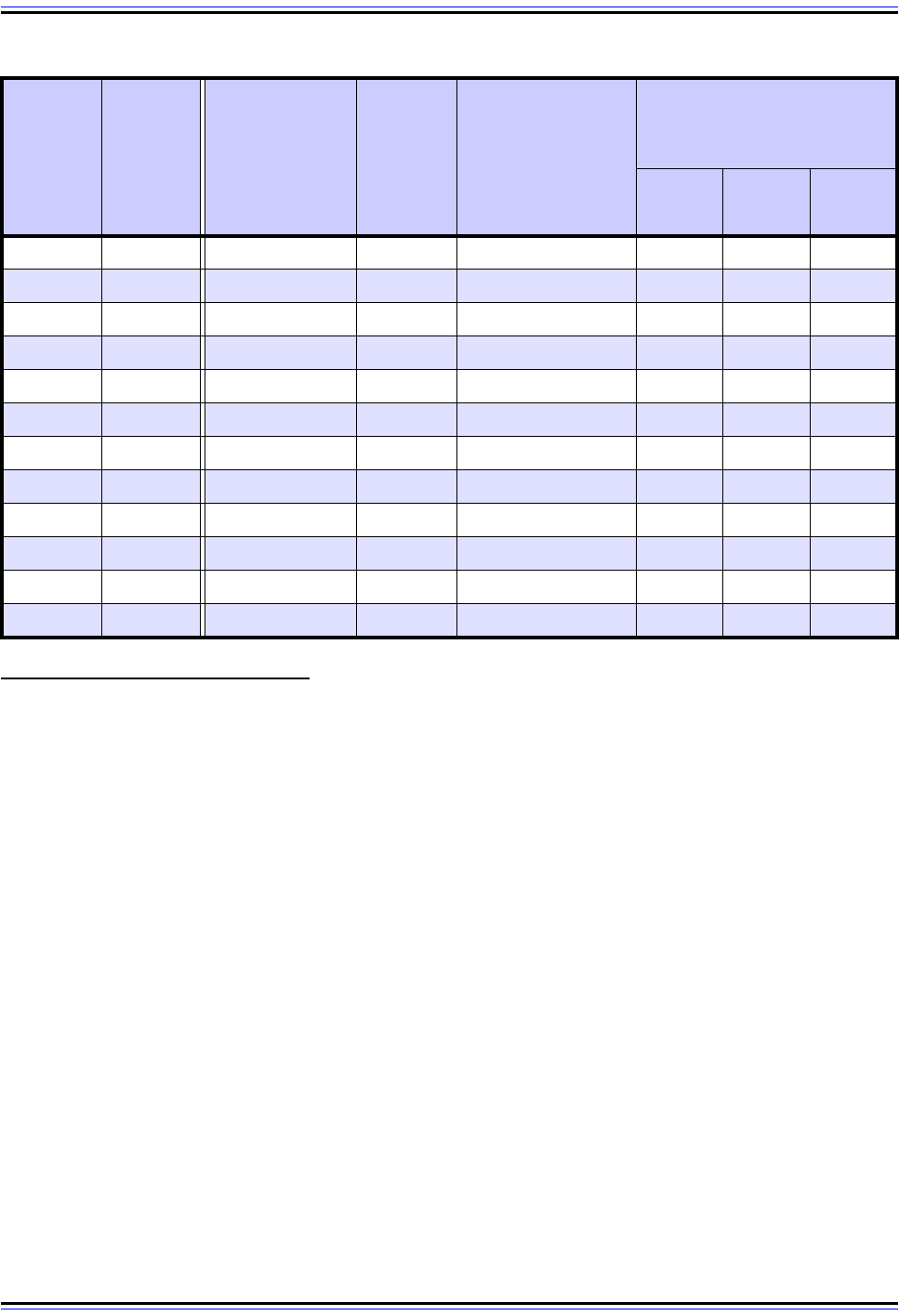
The TCP/IP Guide - Version 3.0 (Contents) ` 411 _ © 2001-2005 Charles M. Kozierok. All Rights Reserved.
IP CIDR Addressing Example
The multiple hierarchical levels of CIDR make the technology seem rather complicated.
However, understanding how CIDR works really is not that difficult, assuming you already
know how subnetting is done. In particular, if you know how VLSM functions, you basically
already know how CIDR does, since they are pretty much the same thing. They differ only
in the way that the hierarchical division of networks is accomplished, and the terminology.
To show how CIDR works better, let's take an example that will illustrate the power of
classless addressing: its ability to selectively subdivide a large block of addresses into
smaller ones that suit the needs of various organizations. Since address allocation in CIDR
typically starts with larger blocks owned by larger Internet Service Providers (ISPs), let's
start there as well.
Suppose we have an ISP that is just starting up. It's not a “major” ISP, but a moderate-sized
one with only a few customers, so it needs only a relatively small allocation. It begins with
the block 71.94.0.0/15. The “/15” on the end of the block address tells us that this is a block
of addresses where the first 15 bits are the network ID and the last 17 the host ID. Of
course, this block was obtained from a larger ISP, carved from a larger block of addresses
by that ISP. For example, 71.94.0.0/15 would be equal to half of the address block
71.92.0.0/14, a quarter of the block 71.88.0.0/13, and so on.
19 13 8,190 /19 255.255.224.0 — 1/8 32
20 12 4,094 /20 255.255.240.0 — 1/16 16
21 11 2,046 /21 255.255.248.0 — 1/32 8
22 10 1,022 /22 255.255.252.0 — 1/64 4
23 9 510 /23 255.255.254.0 — 1/128 2
24 8 254 /24 255.255.255.0 — 1/256 1
25 7 126 /25 255.255.255.128 — — 1/2
26 6 62 /26 255.255.255.192 — — 1/4
27 5 30 /27 255.255.255.224 — — 1/8
28 4 14 /28 255.255.255.240 — — 1/16
29 3 6 /29 255.255.255.248 — — 1/32
30 2 2 /30 255.255.255.252 — — 1/64
Table 56: CIDR Address Blocks and “Classful” Address Equivalents (Page 2 of 2)
# of Bits
For
Network
ID
# of Bits
For Host
ID
# of Hosts Per
Network
Prefix
Length
in Slash
Notation
Equivalent
Subnet Mask
# of Equivalent
“Classful” Addressing
Networks
Class
A
Class
B
Class
C
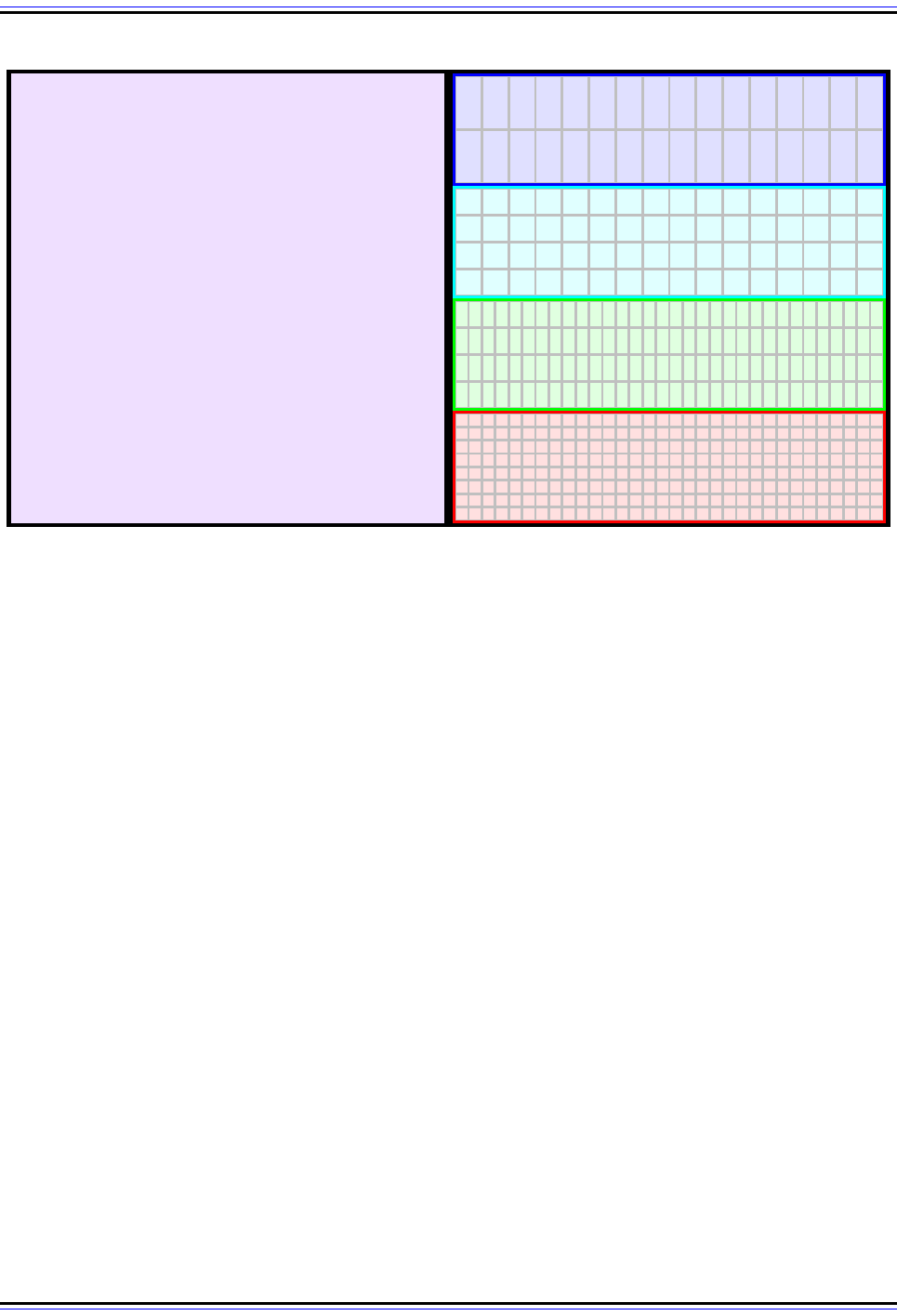
The TCP/IP Guide - Version 3.0 (Contents) ` 412 _ © 2001-2005 Charles M. Kozierok. All Rights Reserved.
Our ISP's block is equal in size to two Class Bs and has a total of 131,070 possible host
addresses. This ISP can choose to divide this block in a variety of ways, depending on the
needs of its clients and its own internal use. However, this ISP is just starting up, so it is not
even sure of what its ultimate needs will be. Let's say it expects to resell about half of its
address space to other ISPs, but isn't sure what sizes they will need yet. Of the other half, it
plans to split it into four different sizes of blocks to match the needs of different-sized
organizations.
To imagine how the ISP divides its address space, we can consider the analogy of cutting
up a pie. The ISP will first “cut the pie in half” and reserve one half for its future ISP
customers. It will then cut the other half into some large pieces and some small pieces. This
is illustrated in Figure 83. (Okay, it’s a square pie. I wanted to show the individual small
blocks to scale. Sue me. ☺)
The actual process of division might follow this progression (illustrated in Figure 84).:
Figure 83: Example Hierarchical Division Of A /15 CIDR Address Block
This diagram shows one method by which an ISP with a relatively large /15 address block (131,070 hosts)
might choose to hierarchically divide it. In this case it is first divided in half into two /16 blocks. One is
reserved, while the other is divided into four /18 blocks. Each of those is divided into blocks of a different size,
to allow allocation to organizations requiring up to 62, 126, 254 or 510 hosts respectively.
Subnetwork #0
71.94.0.0/16
65,534 Hosts
Sub-Subnetwork #1-0, 71.95.0.0/18
16,382 Hosts, Divided Into
32 /23 Blocks of 510 Hosts Each
Sub-Subnetwork #1-1, 71.95.64.0/18
16,382 Hosts, Divided Into
64 /24 Blocks of 254 Hosts Each
Sub-Subnetwork #1-2, 71.95.128.0/18
16,382 Hosts, Divided Into
128 /25 Blocks of 126 Hosts Each
Sub-Subnetwork #1-3, 71.95.192.0/18
16,382 Hosts, Divided Into
256 /26 Blocks of 62 Hosts Each
Full Network
71.94.0.0/15
131,070 Hosts
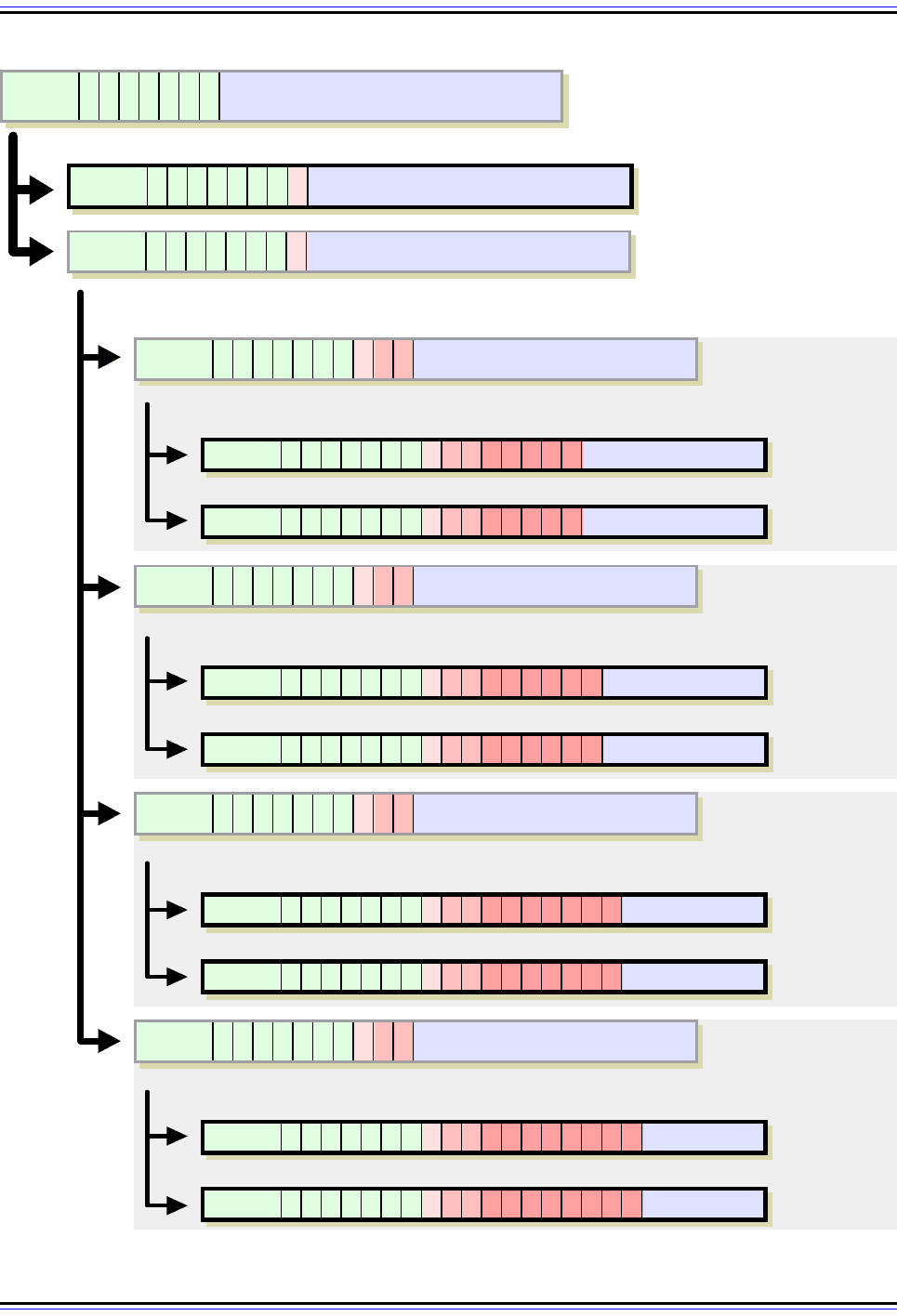
The TCP/IP Guide - Version 3.0 (Contents) ` 413 _ © 2001-2005 Charles M. Kozierok. All Rights Reserved.
Figure 84: Hierarchical Address Division Using Classless Addressing (CIDR)
71 0 1 0 1 1 1 1
Host ID
(17 bits, 131,070 Hosts)
Full Network
71.94.0.0/15
First Division: Split 71.94.0.0/15 into Two /16 Subnetworks
Second Division: Split Subnetwork #1 (71.95.0.0/16)
into Four /18 Sub-Subnetworks
71 0 1 0 1 1 1 1
0
65,534 Hosts
71 0 1 0 1 1 1 1
1
65,534 Hosts
71 0 1 0 1 1 1 1
1 0 0
16,382 Hosts
71 0 1 0 1 1 1 1
1 0 1
16,382 Hosts
71 0 1 0 1 1 1 1
1 1 0
16,382 Hosts
71 0 1 0 1 1 1 1
1 1 1
16,382 Hosts
71 0 1 0 1 1 1 1
1 0 0 0 0 0 0 0
510 Hosts
71 0 1 0 1 1 1 1
1 0 1 1 1 1 1 1 1
254 Hosts
71 0 1 0 1 1 1 1
1 1 0 1 1 1 1 1 1 1
126 Hosts
71 0 1 0 1 1 1 1
1 1 1 0 0 0 0 0 0 0 0
62 Hosts
71 0 1 0 1 1 1 1
1 0 0 1 1 1 1 1
510 Hosts
...
71 0 1 0 1 1 1 1
1 0 1 0 0 0 0 0 0
254 Hosts
71 0 1 0 1 1 1 1
1 1 0 0 0 0 0 0 0 0
126 Hosts
71 0 1 0 1 1 1 1
1 1 1 1 1 1 1 1 1 1 1
62 Hosts
Sub-Sub-
Subnet #1-0-0
71.95.0.0/23
Third Division: Split Sub-Subnetwork #1-0 (71.95.0.0/18)
Into 32 /23 Sub-Sub-Subnetworks
Sub-Sub-
Subnet #1-0-31
71.95.62.0/23
Third Division: Split Sub-Subnetwork #1-1 (71.95.64.0/18)
Into 64 /24 Sub-Sub-Subnetworks
...
Third Division: Split Sub-Subnetwork #1-2 (71.95.128.0/18)
Into 128 /25 Sub-Sub-Subnetworks
...
Third Division: Split Sub-Subnetwork #1-3 (71.95.192.0/18)
Into 256 /26 Sub-Sub-Subnetworks
...
Subnetwork #0
71.94.0.0/16
Subnetwork #1
71.95.0.0/16
Sub-Subnet #1-0
71.95.0.0/18
Sub-Subnet #1-1
71.95.64.0/18
Sub-Subnet #1-2
71.95.128.0/18
Sub-Subnet #1-3
71.95.192.0/18
Sub-Sub-
Subnet #1-1-0
71.95.64.0/24
Sub-Sub-
Subnet #1-1-63
71.95.64.0/24
Sub-Sub-
Subnet #1-2-0
71.95.128.0/25
Sub-Sub-
Subnet #1-2-127
71.95.191.128/25
Sub-Sub-
Subnet #1-3-0
71.95.192.0/25
Sub-Sub-
Subnet #1-3-255
71.95.255.192/25
... ... ... ...
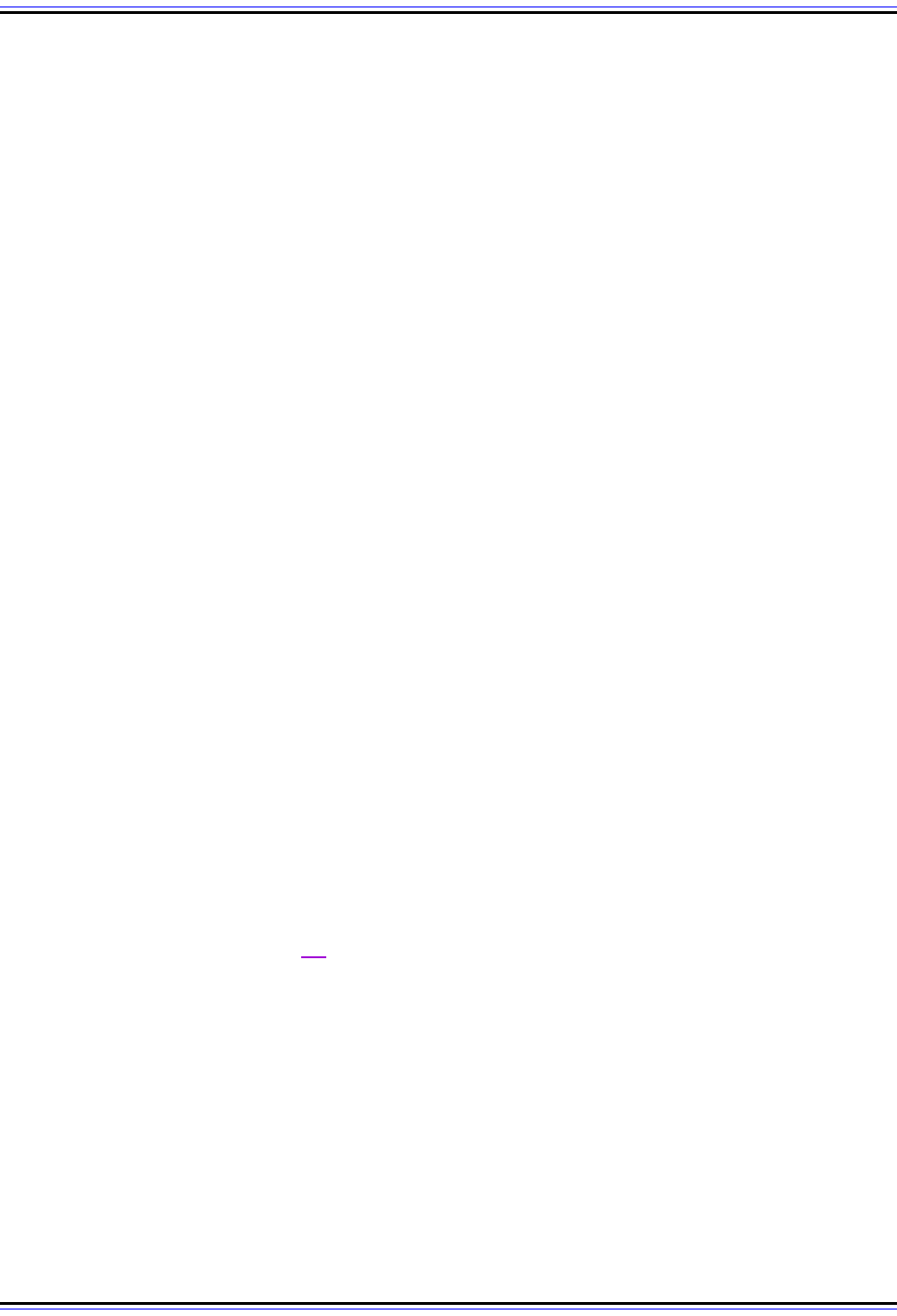
The TCP/IP Guide - Version 3.0 (Contents) ` 414 _ © 2001-2005 Charles M. Kozierok. All Rights Reserved.
First Level of Division
The “pie” is initially cut down the middle by using the single left-most host ID bit as an extra
network bit. Let's see our network address block, 71.94.0.0/15 in binary, with the left-most
host ID bit shown highlighted:
01000111 01011110 00000000 00000000
To make the split, we make one network equal to this binary network address with the
highlighted bit remaining zero, and the other one with it changed to a one. This creates two
subnetworks—not subnets as in the “classful” sense of the word, but portions of the original
network—which I have numbered based on the numeric value of what is substituted into the
new network ID bits:
Subnetwork #0: 01000111 01011110 00000000 00000000
Subnetwork #1: 01000111 01011111 00000000 00000000
Since bit #16 is now also part of the network address, these are “/16” networks, the size of
a “classful” Class B network. So, the subnetworks are:
Subnetwork #0: 71.94.0.0/16
Subnetwork #1: 71.95.0.0/16
You’ll notice that the “#0” subnetwork has the same IP address as the larger network it
came from; this is always true of the subnetwork 0 in a network.
Second Level of Division
Let's say we set aside subnetwork #0 above for future ISP allocations. We then choose to
divide the second subnetwork, into four. These we will then further subdivide into different
sizes to meet our customer needs. To divide into four groups we need two more bits from
the host ID of subnetwork #1, shown highlighted and underlined next to the original subnet
bit:
01000111 01011111 00
000000 00000000
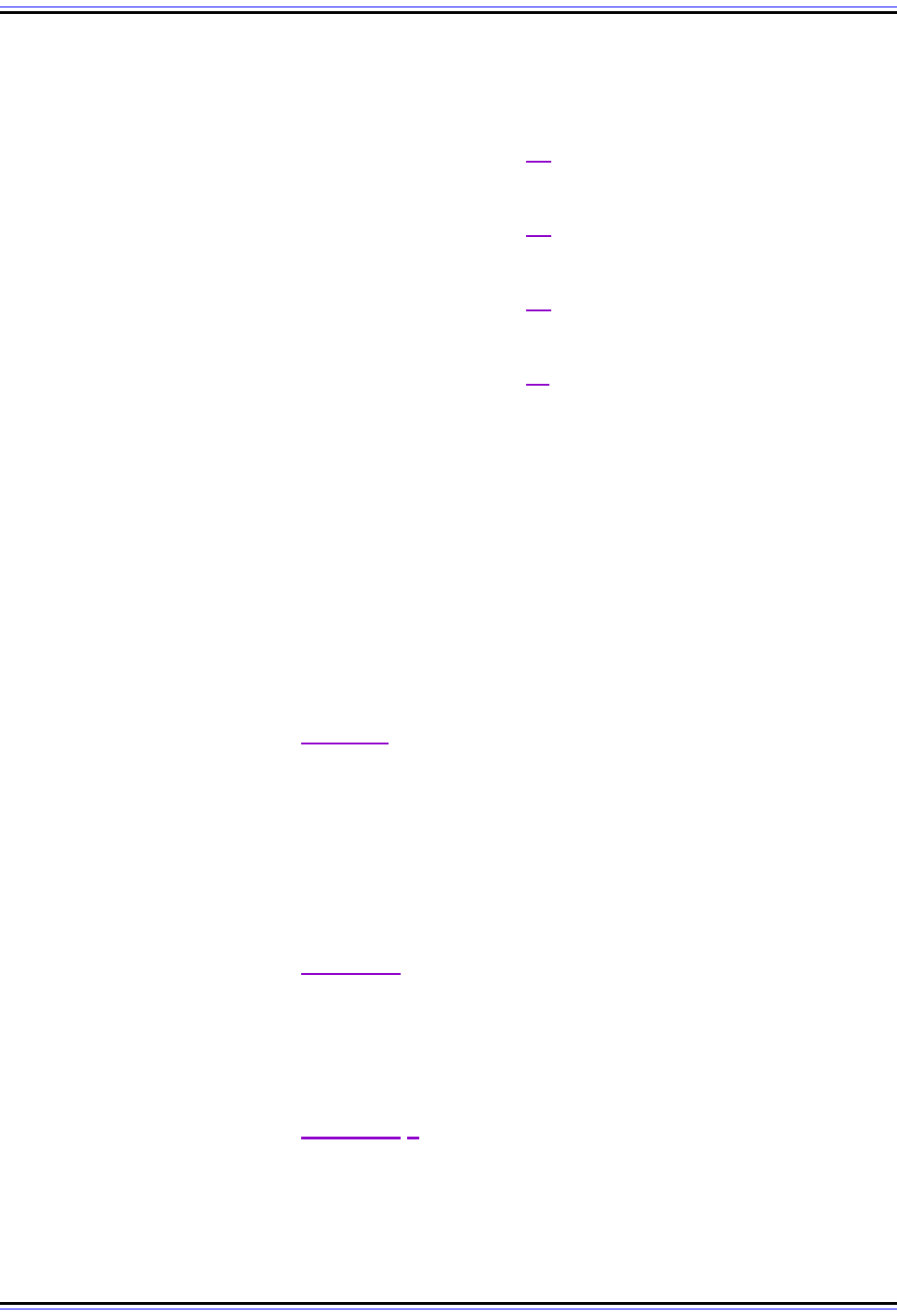
The TCP/IP Guide - Version 3.0 (Contents) ` 415 _ © 2001-2005 Charles M. Kozierok. All Rights Reserved.
These two bits are replaced by the patterns 00, 01, 10 and 11 to get four sub-subnetworks.
They will be “/18” networks of course, since we took two extra bits from the host ID of a “/
16”:
Sub-subnetwork #1-0: 01000111 01011111 00000000 00000000
(71.95.0.0/18)
Sub-subnetwork #1-1: 01000111 01011111 01000000 00000000
(71.95.64.0/18)
Sub-subnetwork #1-2: 01000111 01011111 10
000000 00000000
(71.95.128.0/18)
Sub-subnetwork #1-3: 01000111 01011111 11
000000 00000000
(71.95.192.0/18)
Each of these has 16,382 addresses.
Third Level of Division
We now take each of the four /18 networks above and further subdivide it. We want to make
each of these contain a number of blocks of different sizes corresponding to our potential
customers. One way to do this would be as follows:
☯ Larger Organizations: Customers needing up to 510 addresses require a /23
network. We divide sub-subnetwork #1-0, 71.95.0.0/18 by taking five bits from the host
ID field:
01000111 01011111 00000000 00000000
We substitute into these five bits 00000, 00001, 00010 and so on, giving us 32
different /23 networks in this block, each containing 9 bits for the host ID, for 510 hosts.
The first will be sub-sub-subnetwork #1-0-0, 71.95.0.0/23; the second sub-sub-
subnetwork #1-0-1, 71.95.2.0/23; the last will be sub-sub-subnetwork #1-0-31:
71.95.62.0/23.
☯ Medium-Sized Organizations: For customers needing up to 254 addresses, we
divide sub-subnetwork #1-1, 71.95.64.0/18, by taking six bits from the host ID field:
01000111 01011111 01
000000 00000000
This gives us 64 different /24 networks. The first will be sub-sub-subnetwork #1-1-0,
71.95.64.0/24, the second sub-sub-subnetwork #1-1-1, 71.95.65.0/24, and so on.
☯ Smaller Organizations: For customers with up to 126 hosts, we divide sub-
subnetwork #1-2, 71.95.128.0/18, by taking seven bits from the host ID field:
01000111 01011111 10000000 00000000
Seven bits allow 128 of these /25 networks within our /18 block. The first will be
71.95.128.0/25, the second 71.95.128.128/25, the third 71.95.129.0/25, and so on.
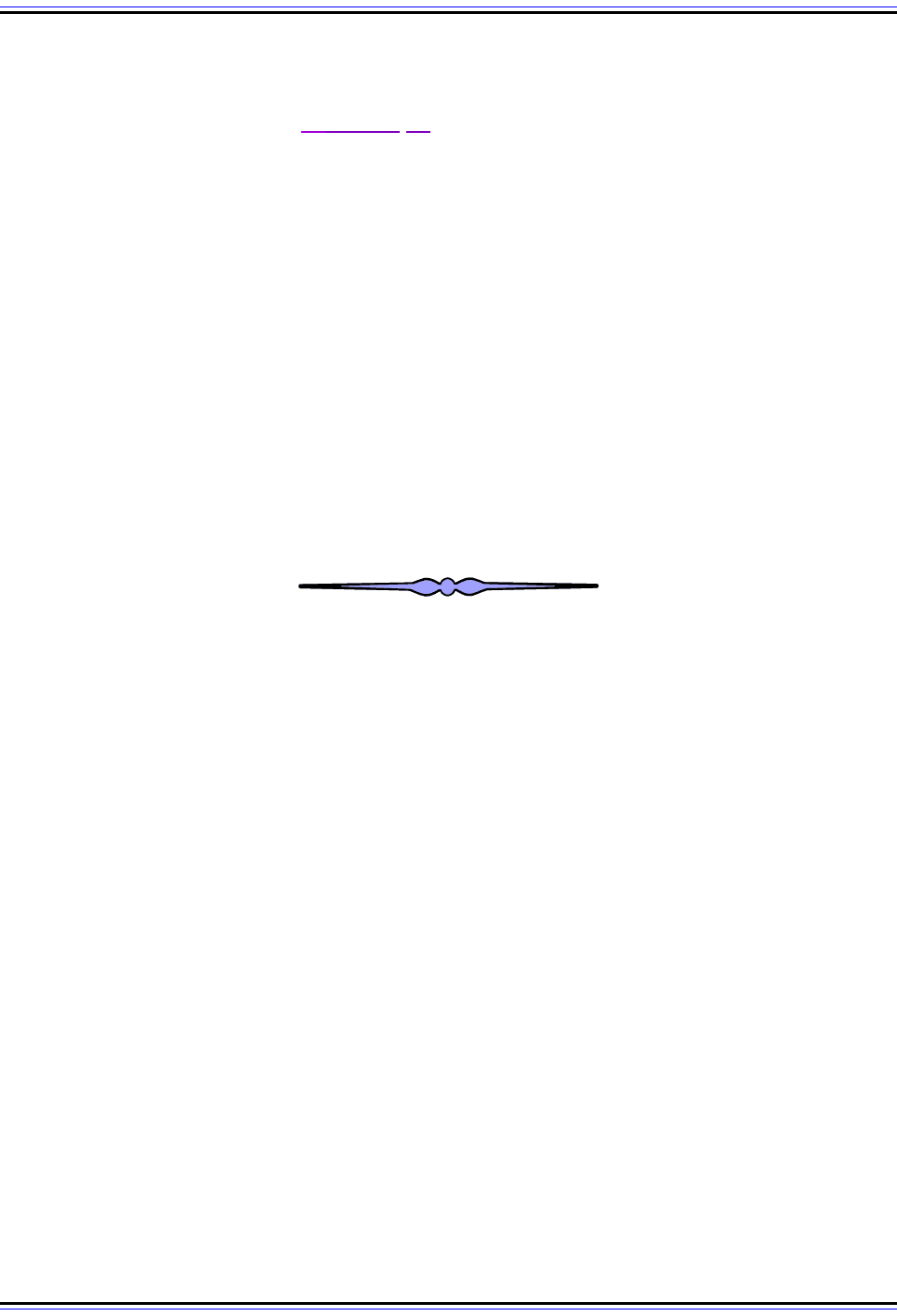
The TCP/IP Guide - Version 3.0 (Contents) ` 416 _ © 2001-2005 Charles M. Kozierok. All Rights Reserved.
☯ Very Small Organizations: For customers with up to 60 hosts, we divide sub-
subnetwork #1-3, 71.95.192.0/18, by taking eight bits from the host ID field:
01000111 01011111 11000000 00000000
This gives us 256 different /26 networks within our /18 block. The first will be
71.95.192.0/26, the second 71.95.192.64/26, and so on.
Other Alternatives for Dividing the Network
Above all else, CIDR is about flexibility—this is only one of many different ways to slice up
this pie (sheet of brownies, whatever!) The ISP might decide that creating four different
sizes of customer networks in advance was not the right way to go. They might instead just
take the tack of dividing the pie in half, dividing it in half again, and so on, as many times as
needed to create “pie slices” of the right size. Alternately, if most of their customers need
around 50, 100, 200 or 500 hosts, the example above might be the easiest to administer.
It would still be possible for the ISP to further divide any of the smaller blocks further if they
needed. They could split a /26 sub-sub-subnetwork into four /28 sub-sub-sub-subnetworks
for very small customers, for example. Also, an individual customer of this ISP could do the
same thing, dividing their own block to suit the internal structure of their network.
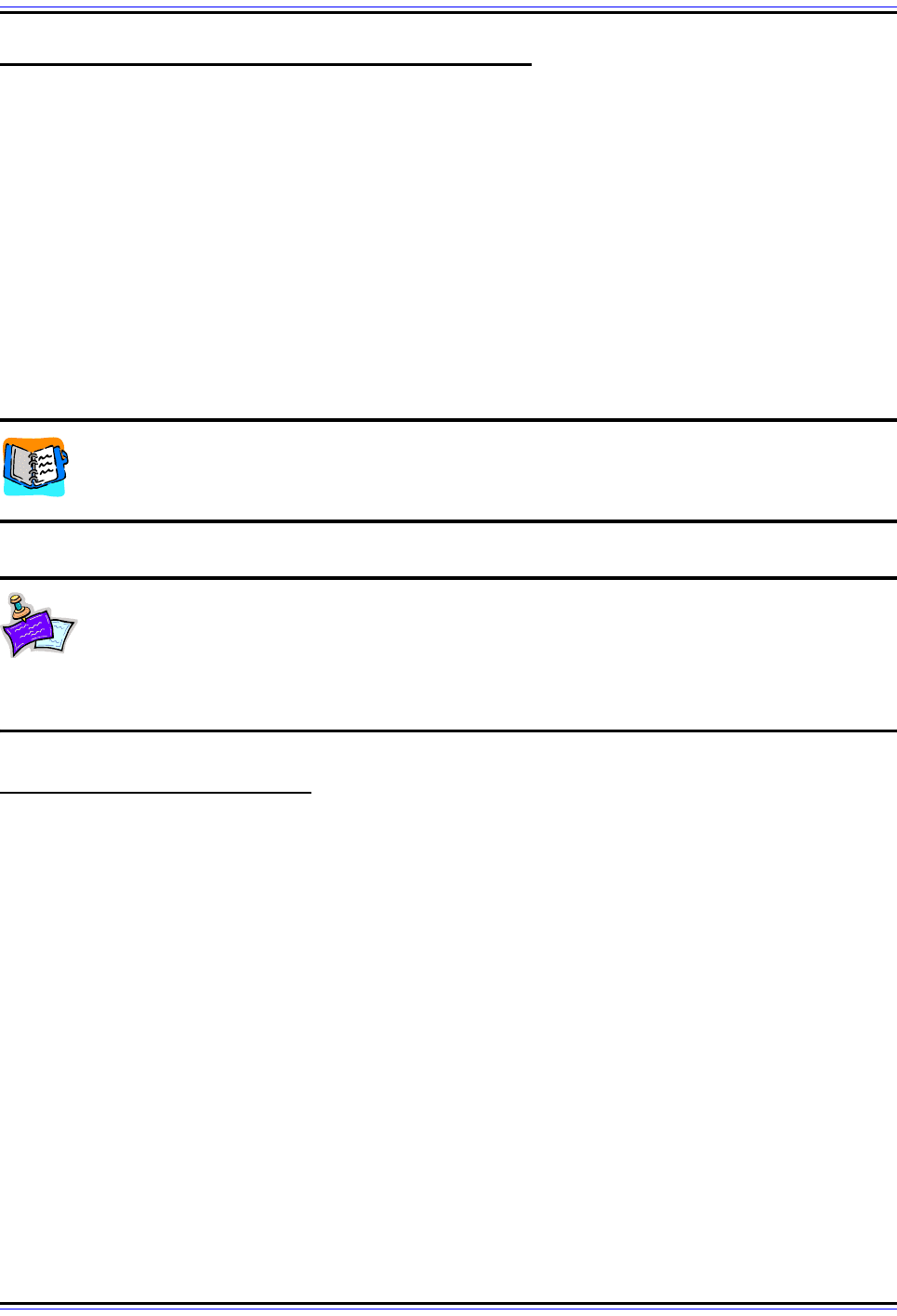
The TCP/IP Guide - Version 3.0 (Contents) ` 417 _ © 2001-2005 Charles M. Kozierok. All Rights Reserved.
IP Datagram Encapsulation and Formatting
The primary job of the Internet Protocol is the delivery of data between devices over an
internetwork. On its journey between two hosts in an internet, this data may travel across
many physical networks. To help ensure that the data is sent and received properly, it is
encapsulated within a message called an IP datagram. This datagram includes several
fields that help manage the operation of IP and ensure that data gets where it needs to go.
In this section I take a look at how the Internet Protocol takes data passed to it from higher
layers and packages it for transmission. I begin with a general discussion of IP datagrams
and encapsulation. I then describe the general format of IP datagrams, including the fields
used in the IP header and how they are interpreted. I also include a brief discussion of IP
datagram options and their use.
Background Information: this section assumes at least passing familiarity with IP
addressing concepts. It also makes reference to the section on datagram fragmen-
tation and reassembly.
Note: IP datagrams are sometimes called IP packets. Whether “datagram” or
“packet” is the preferred term seems to depend on whom you ask; even the
standards don’t use one term exclusively. On the other hand, I have seen IP
datagrams called IP frames, and that’s definitely not correct! The topic on messages and
names in the fundamentals chapter describes these terms more completely.
IP Datagram Encapsulation
In the chapter describing the OSI Reference Model, I looked at several ways that protocols
at various layers in a networking protocol stack interact with each other. One of the most
important concepts in inter-protocol operation is that of encapsulation. Most data originates
within the higher layers of the OSI model. The protocols at these layers pass the data down
to lower layers for transmission, usually in the form of discrete messages. Upon receipt,
each lower-level protocol takes the entire contents of the message received and encapsu-
lates it into its own message format, adding a header and possibly a footer that contain
important control information. Encapsulation is explained in general terms in a separate
topic.
A good analogy for how encapsulation works is a comparison to sending a letter enclosed
in an envelope. You might write a letter and put it in a white envelope with a name and
address, but if you gave it to a courier for overnight delivery, they would take that envelope
and put it in a larger delivery envelope. (I actually have written a complete description of this
sort of analogy, if you are interested.)
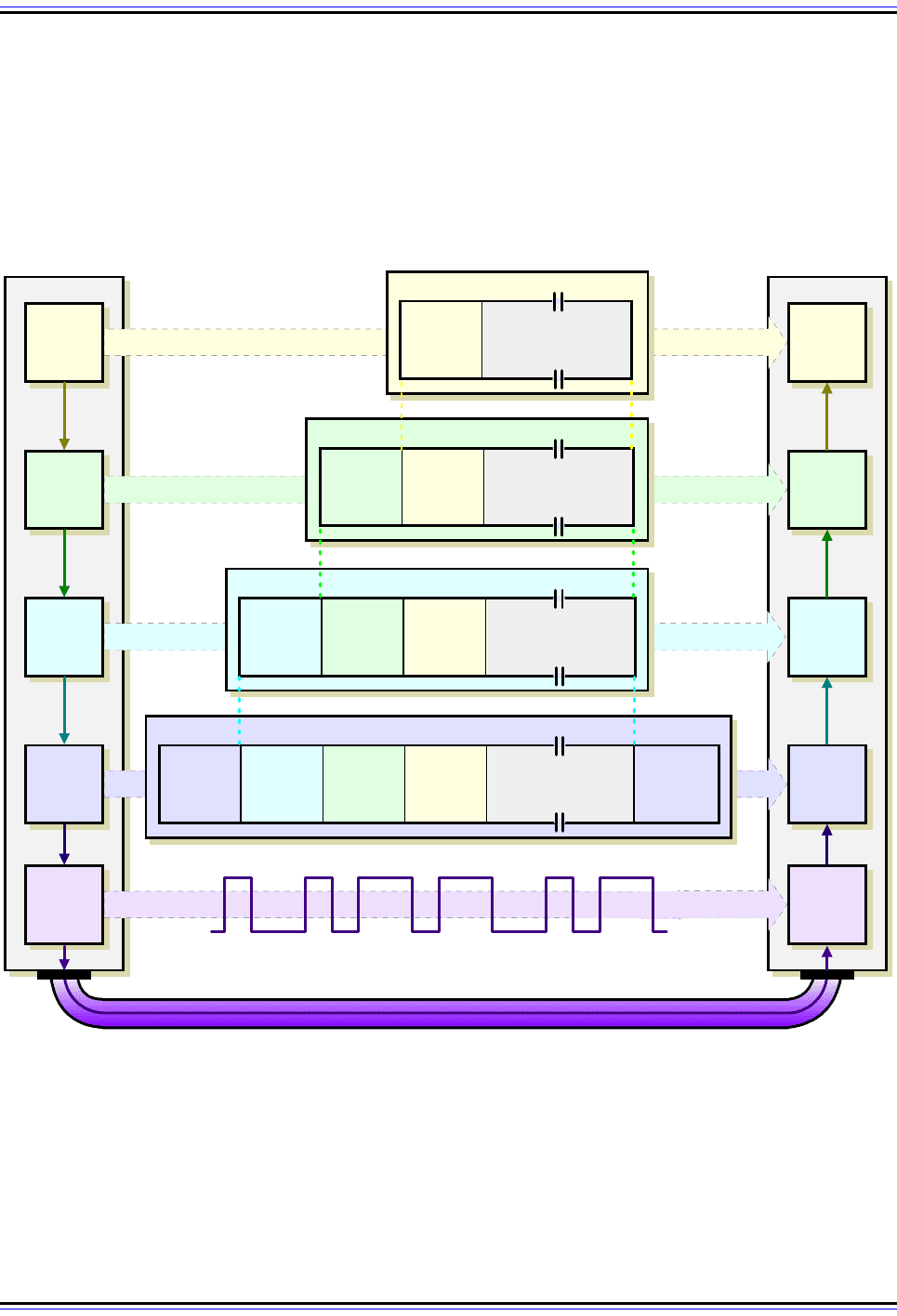
The TCP/IP Guide - Version 3.0 (Contents) ` 418 _ © 2001-2005 Charles M. Kozierok. All Rights Reserved.
Due to the prominence of TCP/IP, the Internet Protocol is one of the most important places
where data encapsulation occurs on a modern network. Data is passed to IP typically from
one of the two main transport layer protocols: TCP or UDP. This data is already in the form
of a TCP or UDP message with TCP or UDP headers. This is then encapsulated into the
body of an IP message, usually called an IP datagram or IP packet. Encapsulation and
formatting of an IP datagram is also sometimes called packaging—again, the implied
comparison to an envelope is obvious. The process is shown in Figure 85.
Figure 85: IP Datagram Encapsulation
This is an adaptation of Figure 15, the very similar drawing for the OSI Reference Model as a whole, showing
specifically how data encapsulation is accomplished in TCP/IP. As you can see, an upper layer message is
packaged into a TCP or UDP message. This then becomes the payload of an IP datagram, which is shown
here simply with one header (things can get a bit more complex than this.) The IP datagram is then passed
down to layer 2 where it is in turn encapsulated into some sort of LAN, WAN or WLAN frame, then converted
to bits and transmitted at the physical layer.
Layer
2
IP
TCP /
UDP
Upper
Layers
Upper
Layers
Upper Layer Message
TCP/UDP Message
IP Datagram
Layer 2 Frame
Layer
1
Layer
1
1 011011001001 011
Layer 2
Header
IP
Header
TCP/UDP
Header
Upper
Layer
Headers
Upper Layer
(Application) Data
Layer 2
Footer
IP
Header
TCP/UDP
Header
Upper
Layer
Headers
Upper Layer
(Application) Data
TCP/UDP
Header
Upper
Layer
Headers
Upper Layer
(Application) Data
Upper
Layer
Headers
Upper Layer
(Application) Data
Layer
2
IP
TCP /
UDP
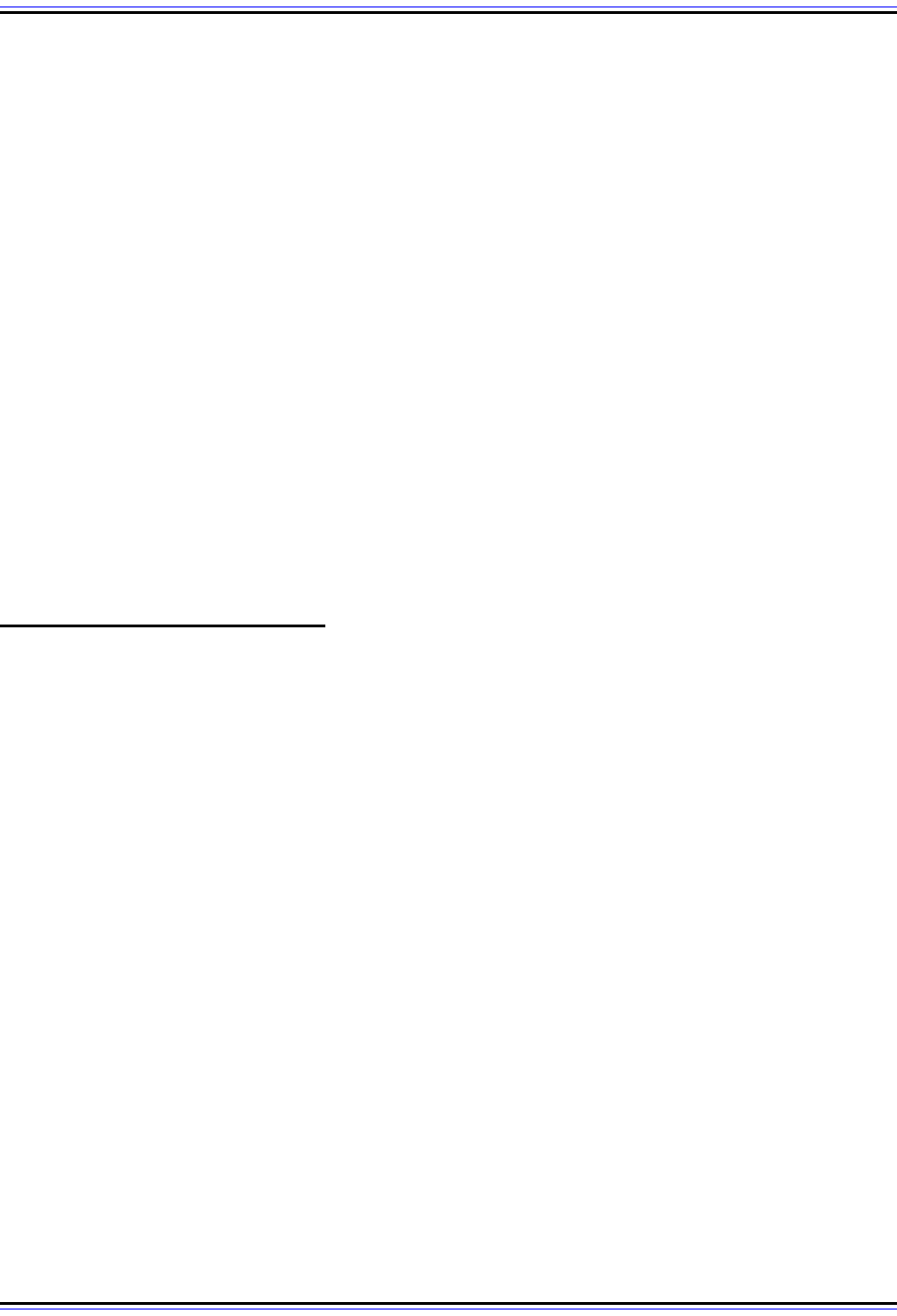
The TCP/IP Guide - Version 3.0 (Contents) ` 419 _ © 2001-2005 Charles M. Kozierok. All Rights Reserved.
If the message to be transmitted is too large for the size of the underlying network, it may
first be fragmented. This is analogous to splitting up a large delivery into multiple smaller
envelopes or boxes. In this case, each IP datagram carries only part of the higher-layer
message. The receiving device must reassemble the message from the IP datagrams. So,
a datagram doesn't always carry a full higher-layer message; it may hold only part of one.
The IP datagram is somewhat similar in concept to a frame used in Ethernet or another data
link layer. The important difference, of course, is that IP datagrams are designed to facilitate
transmission across an internetwork, while data link layer frames are used only for direct
delivery within a physical network. The fields included in the IP header are used to manage
internetwork datagram delivery. This includes key information for delivery such as the
address of the destination device, identification of the type of frame, and control bits. The
header follows a specific format described in the following topic.
After data is encapsulated into an IP datagram, it is passed down to the data link layer for
transmission across the current “hop” of the internetwork. There, it is of course further
encapsulated, IP header and all, into a data link layer frame such as an Ethernet frame. An
IP datagram may be encapsulated into many such data link layer frames as it is routed
across the internetwork; on each hop the IP datagram is removed from the data link layer
frame and then repackaged into a new one for the next hop. The IP datagram, however, is
not changed (except for some control fields) until it reaches its final destination.
IP Datagram General Format
Data transmitted over an internet using IP is carried in messages called IP datagrams. Like
all network protocol messages, IP uses a specific format for its datagrams. We are of
course looking here at IP version 4 and so we will examine the IPv4 datagram format, which
was defined in RFC 791 along with the rest of IPv4.
The IPv4 datagram is conceptually divided into two pieces: the header and the payload.
The header contains addressing and control fields, while the payload carries the actual data
to be sent over the internetwork. Unlike some message formats, IP datagrams do not have
a footer following the payload.
Even though IP is a relatively simple, connectionless, “unreliable” protocol, the IPv4 header
carries a fair bit of information, which makes it rather large. At a minimum, it is 20 bytes
long, and with options can be significantly longer. The IP datagram format is described in
Table 57 and illustrated in Figure 86.
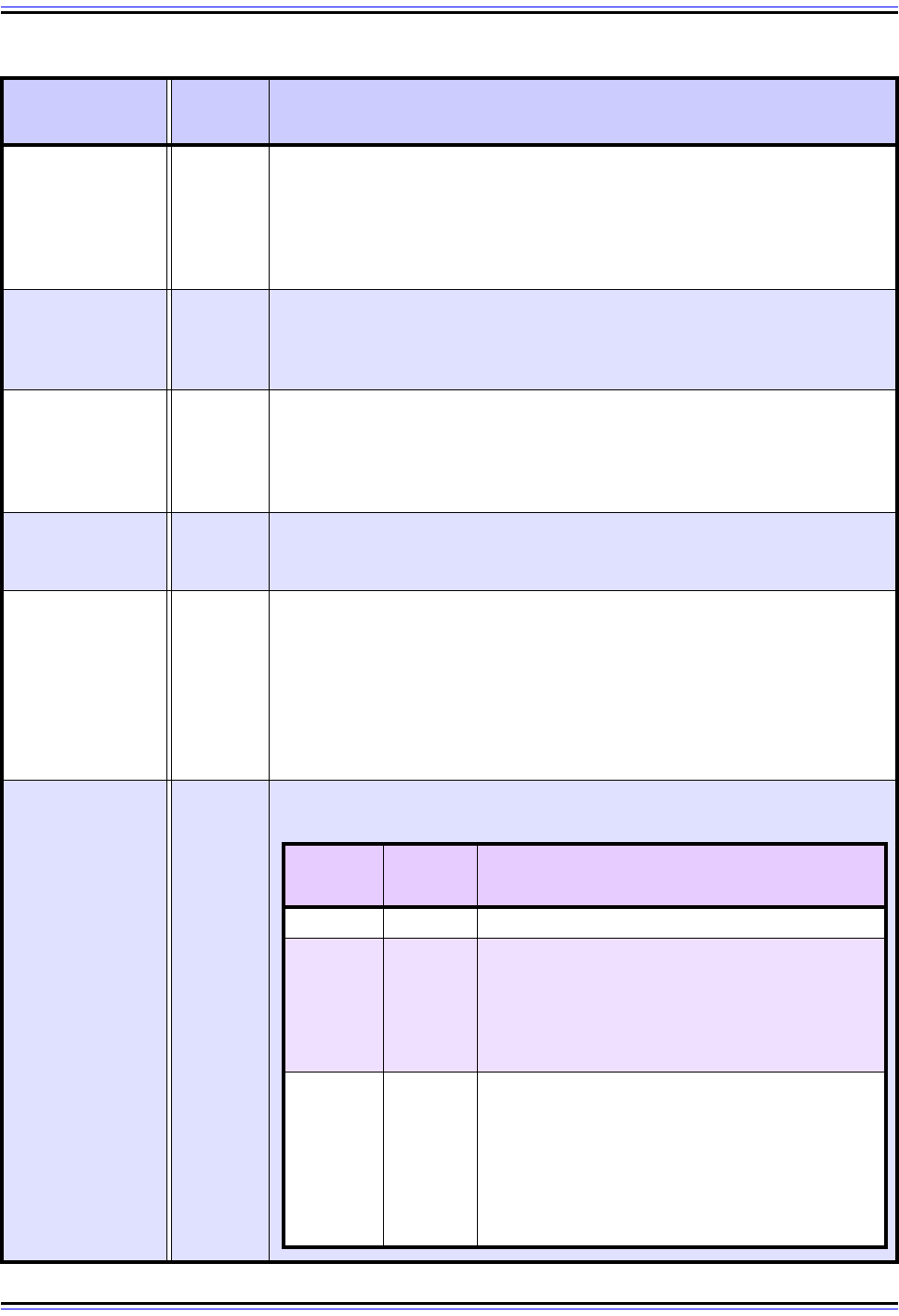
The TCP/IP Guide - Version 3.0 (Contents) ` 420 _ © 2001-2005 Charles M. Kozierok. All Rights Reserved.
Table 57: Internet Protocol Version 4 (IPv4) Datagram Format (Page 1 of 3)
Field Name
Size
(bytes)
Description
Version
1/2
(4 bits)
Version: Identifies the version of IP used to generate the datagram. For
IPv4, this is of course the number 4. The purpose of this field is to ensure
compatibility between devices that may be running different versions of IP.
In general, a device running an older version of IP will reject datagrams
created by newer implementations, under the assumption that the older
version may not be able to interpret the newer datagram correctly.
IHL
1/2
(4 bits)
Internet Header Length (IHL): Specifies the length of the IP header, in 32-
bit words. This includes the length of any options fields and padding. The
normal value of this field when no options are used is 5 (5 32-bit words =
5*4 = 20 bytes). Contrast to the longer Total Length field below.
TOS 1
Type Of Service (TOS): A field designed to carry information to provide
quality of service features, such as prioritized delivery, for IP datagrams. It
was never widely used as originally defined, and its meaning has been
subsequently redefined for use by a technique called Differentiated
Services (DS). See below for more information.
TL 2
Total Length (TL): Specifies the total length of the IP datagram, in bytes.
Since this field is 16 bits wide, the maximum length of an IP datagram is
65,535 bytes, though most are much smaller.
Identification 2
Identification: This field contains a 16-bit value that is common to each of
the fragments belonging to a particular message; for datagrams originally
sent unfragmented it is still filled in, so it can be used if the datagram must
be fragmented by a router during delivery. This field is used by the recipient
to reassemble messages without accidentally mixing fragments from
different messages. This is needed because fragments may arrive from
multiple messages mixed together, since IP datagrams can be received out
of order from any device. See the discussion of IP message fragmentation.
Flags
3/8
(3 bits)
Fl
ags:
Th
ree con
t
ro
l
fl
ags,
t
wo o
f
w
hi
c
h
are use
d
t
o manage
f
ragmen
t
a
ti
on
(as described in the topic on fragmentation), and one that is reserved:
Subfield
Name
Size
(bytes)
Description
Reserved 1/8 (1 bit) Reserved: Not used.
DF 1/8 (1 bit)
Don't Fragment: When set to 1, specifies that the
datagram should not be fragmented. Since the
fragmentation process is generally “invisible” to
higher layers, most protocols don't care about this
and don't set this flag. It is, however, used for testing
the maximum transmission unit (MTU) of a link.
MF 1/8 (1 bit)
More Fragments: When set to 0, indicates the last
fragment in a message; when set to 1, indicates that
more fragments are yet to come in the fragmented
message. If no fragmentation is used for a message,
then of course there is only one “fragment” (the whole
message), and this flag is 0. If fragmentation is used,
all fragments but the last set this flag to 1 so the
recipient knows when all fragments have been sent.
